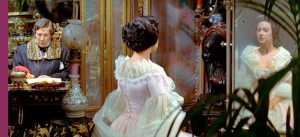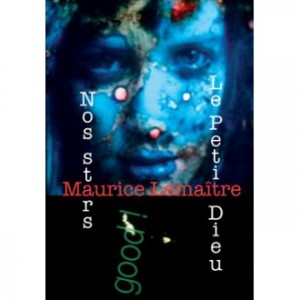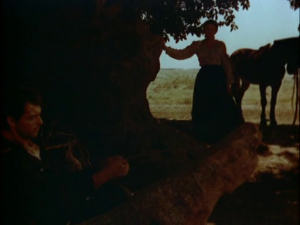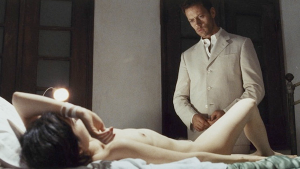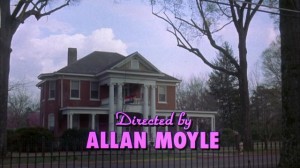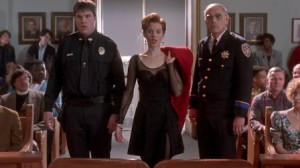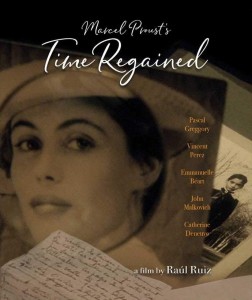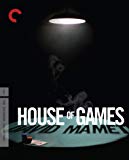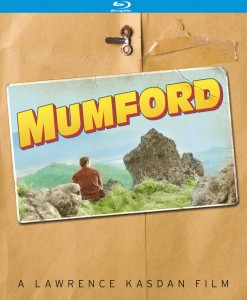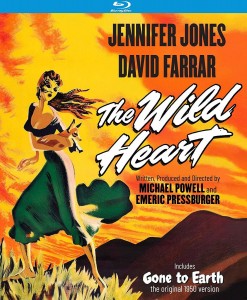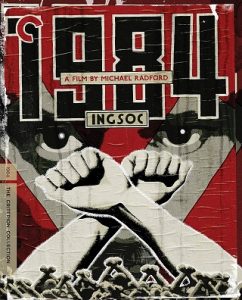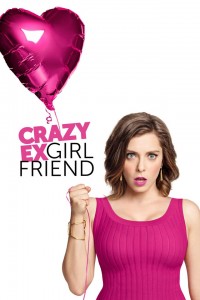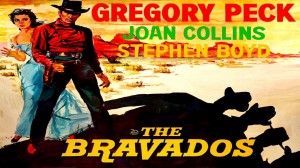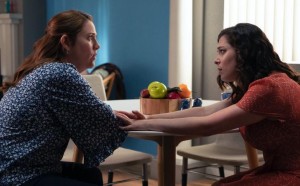From the Autumn 2019 Cinema Scope (https://cinema-scope.com/columns/global-discoveries-on-dvd-compulsively-yours-including-a-few-real-life-confessions-admissions/). — J.R.
Although I’m no longer a member of Il Cinema Ritrovato’s DVD jury, two other visitors to Bologna in June who are familiar with this column presented me with new DVDs:
1. A year ago in this column, while celebrating Edition Filmmuseum’s PAL DVD release of Max Ophüls’ Liebelei (1933) and the German version of his 1955 Lola Montez (which I misspelled as Lola Montès, the title of the French version), I registered the minor complaint that the “bilingual” booklet, which I hoped would explain how and why Marcel Ophüls finally withdrew his obscure objection to the German version (which I regard as the best version, above all for its colours), was only in German. It turns out that this lapse was just a printing error, and the corrected bilingual version of this two-disc set is now available. (Furthermore, I gather that the withdrawn objections of Ophüls fils were basically a matter of money.) Combined with the recent and long-overdue publication of François Truffaut’s Chronique d’Arts Spectacles 1954-1958 — Gallimard’s collection of his texts for a prominent right-wing weekly that, in the opinion of some French cinephiles, are superior to his reviews for Cahiers du Cinéma, and which includes some rapturous writing about Lola Montès (the French version), including praise for its “[un]natural” colours — this makes me want to re-see the German version yet again.
2. Due to my recorded enthusiasm for Maurizio Nichetti’s first slapstick feature, Ratataplan (1979), and his no less loony and hilarious fifth, The Icicle Thief(1989), I was handed a restoration of his equally loony but less hilarious third, Domani si balla! (Tomorrow We Dance, 1983), co-starring Nichetti and Mariangela Melato, on a PAL DVD with optional English subtitles (not always idiomatic or grammatical) released by Collana Forum Italia. The film was described to me as an homage to Méliès, but unfortunately the charming Méliès pastiche occurs only behind the opening credits and then recurs briefly towards the end. The remainder of the movie has something to do with an independent TV news crew (Nichetti and Melato) stumbling upon extraterrestrials (the Mélièsian cutouts) who like to dance, and who persuade earthlings to dance as well. This clearly has as much social satire as Nichetti’s first and fifth forays, but I suspect that it’s less funny to me because its targets are more specifically and locally Italian (and the synthetic ditty they keep dancing to is more irritating than energizing). But at least this movie is as weird as the other two. And poetry, as we know, is what often gets lost in translation.
***
In Paris after Bologna, I wound up purchasing Maurice Lemaître’s Nos stars and Le petit Dieu (both 2002) on a multi-region DVD from Lowave. (One side of the DVD is NTSC, the other side is PAL.) If you don’t know who Lemaître (1926-2018) was, proceed at once to mauricelemaitre.org, and if you want a strong sample of cinematic Lettrism circa 1950, go to Isidore Isou’s Treatise on Venom and Eternity at vimeo.com/ondemand/Isidore and plunk down $4.98. (It’s worth it — and if you don’t believe me, check out the free trailer). But accessing Lemaitre’s seminal 1951 Le film est déjà commencé (Has the Movie Started Yet?) online may, alas, be impossible, even if Lemaître himself used to be wholly accessible, and delightful to hang out with, at many of Nicole Brenez’s Paris screenings of French experimental cinema that I attended. But Lowave’s DVD offers a heady whiff of his personality and unique artistic sensibility, including an “interview” that is really just a sort of home movie of him revisiting some of his childhood haunts.
***
A screening of Jacques Tourneur’s blazing Way of a Gaucho (1952) in an excellent 35mm print was one of the highlights of my Bologna viewing, and some of my contacts informed me that an impressive French DVD of Le Gaucho (the same film) in Bertrand Tavernier’s superb Western de Legende PAL DVD series was available. After much hunting around in Paris, I finally landed it; you can also buy it from French Amazon for 9,97 Euros. Be forewarned that the French subtitles aren’t optional, and the lengthy and informative introductions offered by both Tavernier and Patrick Brion aren’t subtitled at all. But the movie looks great.
***
Catherine Breillat practically begins her fascinating and unusually frank and funny interview on Second Sight’s Region B Blu-ray of Romance (1999) — an extra that already makes this release worth the 14.26 quid asking price at amazon.co.uk — by declaring that even though she’s a feminist in her daily life, she isn’t political at all when she makes films; almost 20 minutes later, she ends the interview by insisting that Romance is political. In between, she admits that she went to great lengths to acquire a virtually unknown, flat-chested, and not especially attractive actress for the film’s female lead and a well-known Italian porn star for one of her male leads in this hardcore sex film that was conceived as anti-porn, a contradiction that she fully acknowledges.
My overall support for Romance, ambivalences and all (some of it I treasure as porn, some of it I treasure as anti-porn), was expressed in my contemporaryreview for the Chicago Reader, some relevant snippets of which are included below:
“[S]exual and philosophical conventions ultimately become film conventions. It’s possible, for instance, that the wordless opening sequence of the Western Rio Bravo— the freedom to rely on images alone — is intrinsically American, as are the taciturn qualities of Western types ranging from Gary Cooper to Clint Eastwood. And it’s equally possible that the offscreen narrators who play such a key role in French cinema, fiction films and documentaries alike, reflect a reliance on spoken language that’s quintessentially French — a conviction that images are never quite enough to explain or bear witness to the world, coupled with a taste for poetry that prefers the high-flown to the mundane and the exalted to the merely expository. Yet this conviction doesn’t typically yield a split between mind and body; rather it creates a kind of musical counterpoint, a dance performed by the two, and, at least to my taste, a sensuality of thought — an idea at odds with the American notion that thought is an alternative to feeling and action.
“…Assuming that both the body and the mind can profit from being challenged, and that the challenges of one don’t necessarily negate the challenges of the other, Romance offers a lot to think about and play with. We’d be fools to reject this bounty out of hand—unless we really are the middle-class cowards some reviewers assume we are.”
***
My fond memories of writer-director Allan Moyle’s Pump Up the Volume(1990) led me to ask for a review copy of the Kino Lorber Blu-ray of The Gun in Betty Lou’s Handbag (1992), which Moyle directed (very adroitly) from a script by Grace Cary Bickley. It’s a comedy-thriller about a neglected, mousy librarian (Penelope Ann Miller) who confesses to a sleazy motel murder she didn’t commit so that her cop husband (Eric Thal) will finally notice her — a concept about as silly as Nichetti’s extraterrestrial dance disease (I wonder how many Italians will laugh at it), but Moyle, Bickley, and a spirited secondary cast (which includes Julianne Moore, Alfre Woodard, Cathy Moriarty, and Meat Loaf, among others) all make the most of it.
***
Aleksei German’s Khrustalyov, My Car! (1998) has just been released in a limited edition Blu-ray box set byArrow Academy, a UK label that threatens, on occasion,to match or surpass the stateside Criterion at some of their own games. What’s exhilarating to me about this all-region package (going for 27.73quid at Amazon UK)is how much it manages to explain, and thereby dissipate, the difficulties in one of the most exciting and vexing Russian masterpieces of the modern era by explicating many of the historical conditions that gave rise to it. There’s only one disc in the box, but that disc contains—along with a restoration of the 150-minute feature in two-channel stereo—an audio commentary by Daniel Bird, a detailed 26-minute audiovisual essay by Eugenie Zvonkine, a 44-minute feature by Russian historian Jonathan Brent about the “Doctors’ Plot” (the fallacious conspiracy that is the crux of the film’s narrative), and a 47-minute interview with German by the late Ron Holloway. There’s also a 58-page booklet and a two-sided foldout poster.
***
Another example of a very fine bonus: on KimStim’s Blu-ray of Raúl Ruiz’s Time Regained (1999),Bernard Génin’s comprehensive and intelligent 23-minute critical review of all the major attempts to film Proust’s À la recherche du temps perdu, including Génin’s evaluations of the projected casts of some of the unrealized projects. (He thinks Marlon Brando would have made the ideal Baron de Charlus in Luchino Visconti’s prospective version, but I’ve always thought that Peter Sellers could have been ideal in anyone’s version.) I was delighted to hear Génin report that “someone” told Ruiz about an article celebrating the cinematographic properties of Proust in La Revue du Cinéma (the precursor of Cahiers du Cinéma), because that “someone” was me — although, to be fair, other friends of Raúl likely told him about it as well.
***
On Criterion’s top-notch Blu-ray edition of David Mamet’s House of Games (1987), the extras are almost as good as the movie — Mamet’s first feature, and still his best. On the other hand, I enjoyed rewatching Lawrence Kasdan’s small-town comedy Mumford (1999), just released on a Kino Lorber Blu-ray, at least 15 times more than I enjoyed watching and listening to Kasdan drone on in a very nasal voice about why the film was personally important to him — for 20 minutes, no less. (To tell the truth, I only made it through the first half of this.)
***
Michael Powell and Emeric Pressburger’s 110-minute Gone to Earth (1950) is thankfully included as an extra on Kino Lorber’s Blu-ray of David O. Selznick’s 86-minute road-show version of the film, The Wild Heart (1952), put together for us clueless Yanks. But this being America, it’s the skim job — which adds a pointless overture and then an insulting voiceover to the opening sequence that explains what any viewer can figure out for herself — that gets the star billing and catalogue listing. Gone to Earth has never been a favourite item in the Powell corpus of florid, mythologized period fairy tales, but I found it enchanting — that is, the first half hour (or 25 minutes in the Selznicked version), meanwhile looking forward to savouring the rest when I don’t have to worry about this column’s deadline. The colours are as vivid as those in the German Lola Montez, and Jennifer Jones as the daughter of a Gypsy mother evokes her transgressive characters in both Duel in the Sun (1946) and Ruby Gentry (1952), which Luc Moullet wrote about so effectively in Positif no. 539. (Go to mubi.com/notebook/posts/the-bravura-sequence for an English translation of his article.)
***
Apart from George Orwell’s painfully indelible original novel from 1948, the best version of 1984 by far is the one made in 1984 by writer-director Michael Radford, and what makes it so good is Radford’s brilliant decision to set it not in some randomly hypothetical or even actual 1984, but in 1948’s and Orwell’s version of that year, which means a shabby and wartorn London projected into Orwell’s sense of the future. In effect, this means that the film unfolds simultaneously in three separate time frames — 1948, Orwell’s 1984, and our 1984 — without ever seeming top-heavy or tricky, and repoliticizes the novel in the process. This isn’t the film’s only strength: it also includes Richard Burton’s last film performance (and one of his best), and the perfect casting of John Hurt as the lead.
The most striking thing about Criterion’s excellent Blu-ray edition is the fact that it includes two soundtrack scores: the originally commissioned and traditional Dominic Muldowney score, and the rock/pop score by the Eurhythmics that was foisted on the film against Radford’s wishes. However, the customer’s choice isn’t as clearcut as the one between Gone to Earth and The Wild Heart, because Radford now admits that he likes both scores.
***
In my last column, I attempted to rationalize my conversion to streaming and then writing about it in a column called “Global Discoveries on DVD” by referencing a Babylon Berlin box set. Since then, I’ve plowed through all three seasons to date of The Good Fight (2017-2019) on CBS forits grasp of real-life corruptions via a fictional Chicago law firm (and was amply rewarded, especially by the uncanny casting of Gina Gershon as “Melania Trump” in Season Three), then the first two seasons of Mad Men (2007-2015) on Netflix, for its enticing critique of Madison Avenue in the early ’60s as a haven for serial adultery, workplace sexual abuse, and nonstop chain smoking, meanwhile ordering a DVD box set for Season Three while still idly wondering how much of the show’s clever critique was actually a nostalgic celebration as well as a thoughtful condemnation.
Finally, to rationalize my binge-watching the glorious Crazy Ex-Girlfriend (2015-2019) on Netflix — a musical sitcom about an overachieving, neurotic Jewish New York lawyer named Rebecca Bunch (cowriter Rachel Bloom) resettling in an obscure corner of California to rekindle her teenage romance with a sweet-tempered airhead named Josh (Vincent Rodriguez III), a Filipino-American jock — which I belatedly discovered thanks to a hot tip embedded in Adrian Martin’s article about “Storytelling Mutations Between Television and Cinema” in the Summer 2019 Cineaste (which also includes a persuasive critique of the way The Other Side of the Wind got “classically” misedited and misstructured for Netflix), I decided to order a three-disc DVD set of the third season while I was still chugging my way through the second. Unfortunately, my digital setup in the only air-conditioned room in my flat can’t play five-track audio without muffling or blocking crucial parts of the sound, which, along with the English subtitles option, makes streaming on my laptop far more congenial, even when I’m using my hearing aid. But I’m glad I ordered the DVDs anyway, because the advertising on the back of the box highlights a vexing issue about trying to do something subversive in mainstream media that’s already been bugging me a lot, and not only in relation to Welles’ defiantly unclassical unfinished feature.
Here’s the deal: at first the flip side of the Crazy Ex-Girlfriend Season Three box had me worried because it’s headlined, in full caps, “REVENGE IS A DISH,” followed by a lengthy, corroborating dishy text. For me, “revenge” is the worst word in the lexicon of contemporary American doublethink—not only the principal cause of at least two misguided and misbegotten invasions and military occupations mislabeled as wars in the Middle East, and practically the only theme to be found in the Tarantino playbook, but the perfect illustration of what makes my country so disastrously removed from reality and mired in media fantasies devised for pre-teen boys who still believe in winners and losers, good guys and bad guys. I was immediately reminded of my recent look at Henry King’s The Bravados (1958) on a Twilight Time Blu-ray, in anticipation of the interesting King retrospective at this year’s edition of Il Cinema Ritrovato. King, in his wisdom, decided to critique the macho revenge myth in our American consciousness, rather like the way he took apart the macho fastest-gun-in-the-west myth in The Gunfighter (1950), for me his key masterpiece. Even if he didn’t fully succeed in this difficult project, the nobility of the aim and the sentiment behind it are still evident. But if you look at the Bravados trailer on the same Blu-ray, you’ll discover that the Fox people, in their own wisdom, decided that the best way—actually the only way — of selling such a movie to the mainstream is to advertise it as just another goddamn generic revenge Western, without any irony or second thoughts or regrets. Case closed.
The same thing applies to Crazy Ex-Girlfriend’s third season — a devastating deconstruction of the revenge scenario (at least for the first four episodes, and then briefly resumed in the tenth) — and its antithetical marketing label, which tries to undo and undermine much of the rough magic. Unfortunately, most of the rest of the third season mutates from musical sitcom to straight drama with musical numbers, turning glum and humourless but without removing any of the outlandish plot contrivances and verbal match cuts designed to keep the story going. Fortunately, the fourth season returns joyfully to musical sitcom with periodic reality checks, topped by a voluptuous performance in the first episode of “No One Else is Singing My Song” in a three-part split-screen of three major characters in their separate, self-induced miseries singing it in three-part harmony, which eventually expands into a twelve-part split-screen reprise. But unfortunately, when Greg Serrano, my favourite of Rebecca Bunch’s ex-boyfriends, makes his belated reappearance in Season Four, he’s no longer being played by the same actor: Skylar Astin has stepped in to replace Santino Fontana, and even though the show tries to finesse this by having Rebecca remark repeatedly how much he’s changed during his stint at Emory, it’s painfully clear that he’s no longer the same guy.
And here’s the rub: whereas it’s a plus that a show so preoccupied with obsessive behaviour as a contagious disease — with Rebecca as the infector and her paralegal pal Paula (Donna Lynne Champlin), who is as important to the series as Rebecca, boss Darryl (Pete Gardner), neighbour Heather (Vella Lovell), romantic rival Valencia (Gabrielle Ruiz), and at least three of Rebecca’s boyfriends among the infectees — can only be seriously accessed by obsessive binge-watching, any show with 62 episodes adding up to 40-plus hours is bound to have its peaks and canyons, with a certain number of desperate trial balloons and lazy retreads concocted just to keep the whole shebang moving. And these low points have a lamentable cumulative effect of jeopardizing the show’s progressive agenda of showing that even fucked-up sitcom characters feeding on and replicating, or else rekindling and/or exposing, one another’s obsessions are capable of growth and other kinds of positive development. In short, the sitcom template of dependably unchangeable quirks (a business model of how to stay in business) conflicts with the ethical and artistic model of showing how those quirks can be overcome. This leads to an overall stalemate in terms of business, art, and ethics — hence the show ending after four seasons with a conclusively non-conclusive bit of self-referentiality, followed by a very showbizzy live concert of selected numbers from the show, with the actors finally using their own names and something that resembles triumphant exhaustion more than any kind of completion.
Even so, what makes Crazy Ex-Girlfriendso irreplaceable isn’t just its creative cinematic smarts and its witty wordplay, but also its accurate depiction of The Way We Live Now — hopefully referencing here something more than a middle-class “we” (i.e., those who can afford Netflix), but that’s what makes the more downscale Paula and the show’s evolving sense of community so important — which we don’t find in many theatrical movies these days. (An exception: wait for Patrick Wang’s two-part A Bread Factory, which Michael Sicinski wrote about in Cinema Scope78 and whichGrasshopper Films will eventually be bringing out in a take-home format.) Of course, it’s entirely possible that a show predicated on a seeming inability to outgrow adolescent traumas and disappointments, apart from saying something creepy about the US (or is it the world?) as a whole, is pushing all my buttons because it’s saying something creepy about me too (pun intended? I haven’t yet figured that one out). Yet it’s still a plus when you can start applying the lessons of a show to the world you live in, not just the world you dream about. Pace Adrian Martin, Crazy Ex-Girlfriend may qualify as “vulgar postmodernism,” but that doesn’t prevent it from having more to say about the real world and real-life issues than Mad Men and The Good Fight combined.
Unlike what I’ve sampled of Rachel Bloom’s music videos — whose dirty lyrics and revisionist takes on Ray Bradbury, The Wizard of Oz, and Disney cartoons don’t impress me much except as early tryouts — CEG’s panoply of female-oriented sexual/anatomical details (from “period sex” to yeast infections), texting, Instagram and other social media, pharmaceutical frenzies, and multiple romantic self-deceptions, along with her sexually and racially diverse characters, including a gay jock and two bisexuals (one of whom performs a number called ”Getting Bi”), and one of the heroine’s eventual flatmates (Clark Moore’s AJ) whose gender and sexual orientation are never established, are consistently funny, fresh, and real. Indeed, towards the end of the first season, there are moments when the various misalignments of desires and impulses become positively Proustian, but here it’s the fantasies planted or harvested by movies and other TV shows or ads rather than the conceits of literature that provide all the templates. (There’s even a mention of Don Draper in the fifth episode of CEG’s first season, and another Mad Menreference in the second episode of Season Four.) These templates are all spelled out deliciously in the musical numbers, including even some allusions to specific models (e.g., the wonderful “Settle for Me” channels Astaire and Rodgers, “Love’s Not a Game” is a direct steal from Guys and Dolls’ “Luck Be a Lady,” and “The Math of Love Triangles” alludes more indirectly to Marilyn Monroe’s “Diamonds Are a Girl’s Best Friend” in Gentlemen Prefer Blondes).Crazy is, above all, a very astute form of media criticism (see, for instance, the musical number “Slow Motion” in Season Four, Episode 15) enhanced by a genuine cinematic intelligence—by which I mean, among many other things, the editing (including all the Straubian cuts to black leader), the timing of the shot changes in the musical numbers, and the diverse rhyme effects in the crosscutting subplots. (I’m talking about découpage, not mise en scène, which is far less important in this series.) Even when the comic situations become absurdly contrived and/or simply formulaic, some emotional truths about doublethink and its painful consequences always leak through. And I hasten to add that this show created by two women, Bloom and Aline Brosh McKenna, offers a uniquely female perspective on all its themes and stresses that I haven’t seen anywhere else. Maybe my taste for autocritique that accounts for much of my reverence for Welles and Stroheim leads me to this hyperbole, but something tells me that Bloom and McKenna are working out some of their own personal issues, and their honest fidelity to those issues is what makes them mine.

